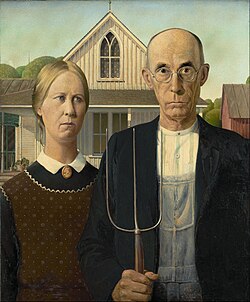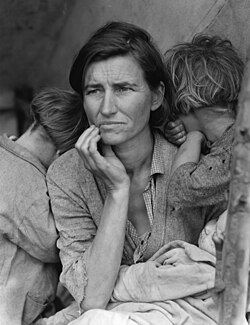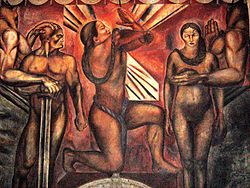In British cinema
Early British cinema used the common social interaction found in the literary works of Charles Dickens and Thomas Hardy. [28] One of the first British films to emphasize realism's value as a social protest was James Williamson's A Reservist Before the War, and After the War in 1902. The film memorialized Boer War serviceman coming back home to unemployment. Repressive censorship during 1945–54 prevented British films from displaying more radical social positions. [28]
After World War I, the British middle-class generally responded to realism and restraint in cinema, while the working-class generally favored Hollywood genre movies. Thus realism carried connotations of education and high seriousness. These social and aesthetic distinctions would soon become running themes as social realism is now associated with the arthouse auteur, while mainstream Hollywood films are shown at the multiplex. [28]
Producer Michael Balcon revived this distinction in the 1940s, referring to the British industry's rivalry with Hollywood in terms of "realism and tinsel". Balcon, the head of Ealing Studios, became a key figure in the emergence of a national cinema characterized by stoicism and verisimilitude. Critic Richard Armstrong said: "Combining the objective temper and aesthetics of the documentary movement with the stars and resources of studio filmmaking, 1940s British cinema made a stirring appeal to a mass audience." [28]
Social realism in cinema was reflecting Britain's transforming wartime society. Women were working alongside men in the military and its munitions factories, challenging pre-assigned gender roles. Rationing, air raids and unprecedented state intervention in the life of the individual encouraged a more social philosophy and worldview. Social realist films of the era include Target for Tonight (1941), In Which We Serve (1942), Millions Like Us (1943), and This Happy Breed (1944). Historian Roger Manvell wrote, "As the cinemas [closed initially because of the fear of air raids] reopened, the public flooded in, searching for relief from hard work, companionship, release from tension, emotional indulgence and, where they could find them, some reaffirmation of the values of humanity." [28]
In the postwar period, films like Passport to Pimlico (1949), The Blue Lamp (1949), and The Titfield Thunderbolt (1952) reiterated gentle patrician values, creating a tension between the camaraderie of the war years and the burgeoning consumer society. [28]
Sydney Box's arrival as head of Gainsborough pictures in 1946 saw a transition from the Gainsborough melodramas, which had been successful during the war years, to social realism. Issues such as short-term sexual relationships, adultery, and illegitimate births flourished during the Second World War [29] and Box, who favoured realism over what he termed as "flamboyance fantasy", [30] brought these and other social issues, such as child adoption, juvenile delinquency, and displaced persons to the fore with films such as When the Bough Breaks (1947), Good-Time Girl (1948), Portrait from Life (1948), The Lost People (1949), and Boys in Brown (1949). Films of new rapidly expanding forms of leisure by working class families in postwar Britain were also represented by Box in Holiday Camp (1947), Easy Money (1948), and A Boy, a Girl and a Bike (1949). [31] Box remained determined on making social realism films, even after Gainsborough closed in 1951, when he said in 1952 "No film has yet been made of the Tolpuddle Martyrs, the Suffragette Movement, the National Health Service as it is today, or the scandals of the patent medicines, oil control in the World, or armaments manufactured for profit." [32] However, he would not go on to make these types of stories into films, instead focusing on issues related to abortion, teenage prostitution, bigamy, child neglect, shoplifting, and drug trafficking in films such as Street Corner (1953), Too Young to Love (1959), and Subway in the Sky (1959). [33]
A British New Wave movement emerged in the 1950s and 1960s. British auteurs like Karel Reisz, Tony Richardson, and John Schlesinger brought wide shots and plain speaking to stories of ordinary Britons negotiating postwar social structures. Relaxation of censorship enabled film makers to portray issues such as prostitution, abortion, homosexuality, and alienation. Characters included factory workers, office underlings, dissatisfied wives, pregnant girlfriends, runaways, the marginalized, the poor, and the depressed. The New Wave protagonist was usually a working-class male without bearings in a society in which traditional industries and the cultures that went with them were in decline. [28]
Mike Leigh and Ken Loach also make contemporary social realist films. [34]




















